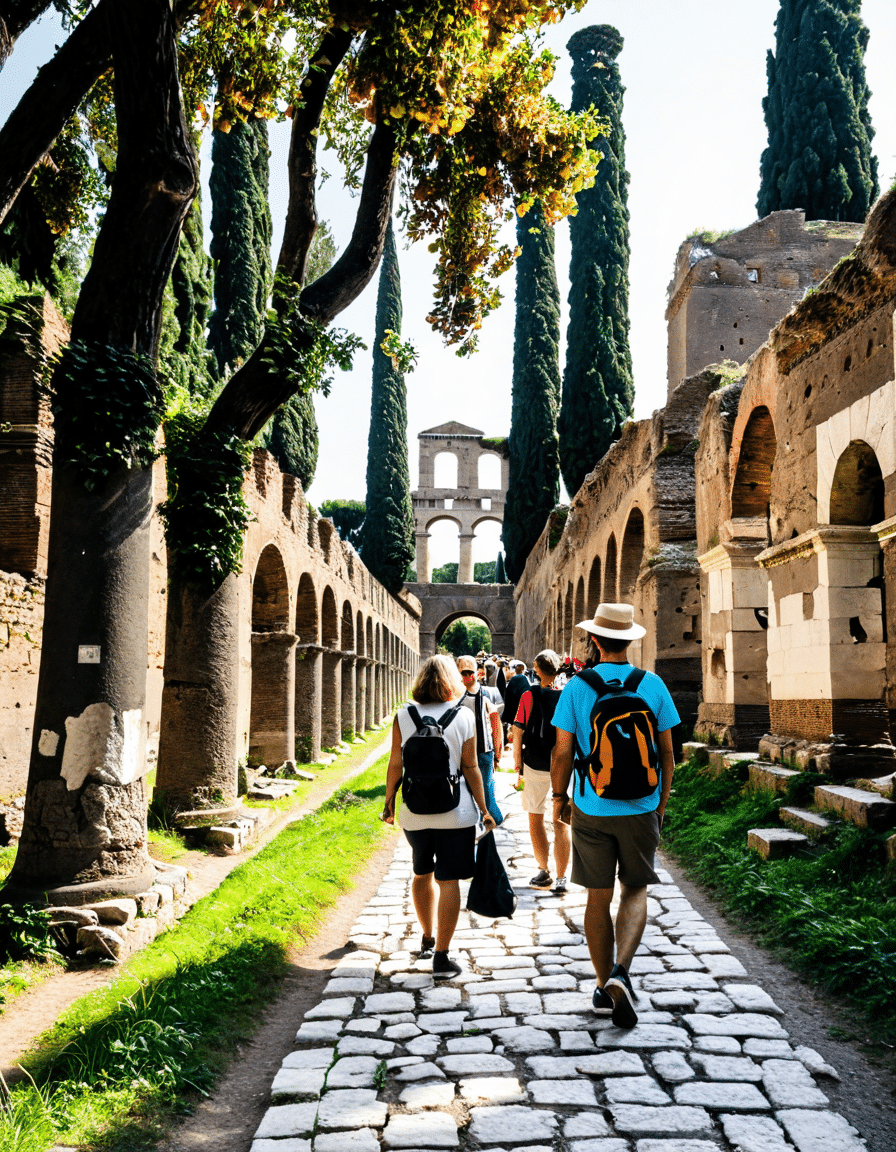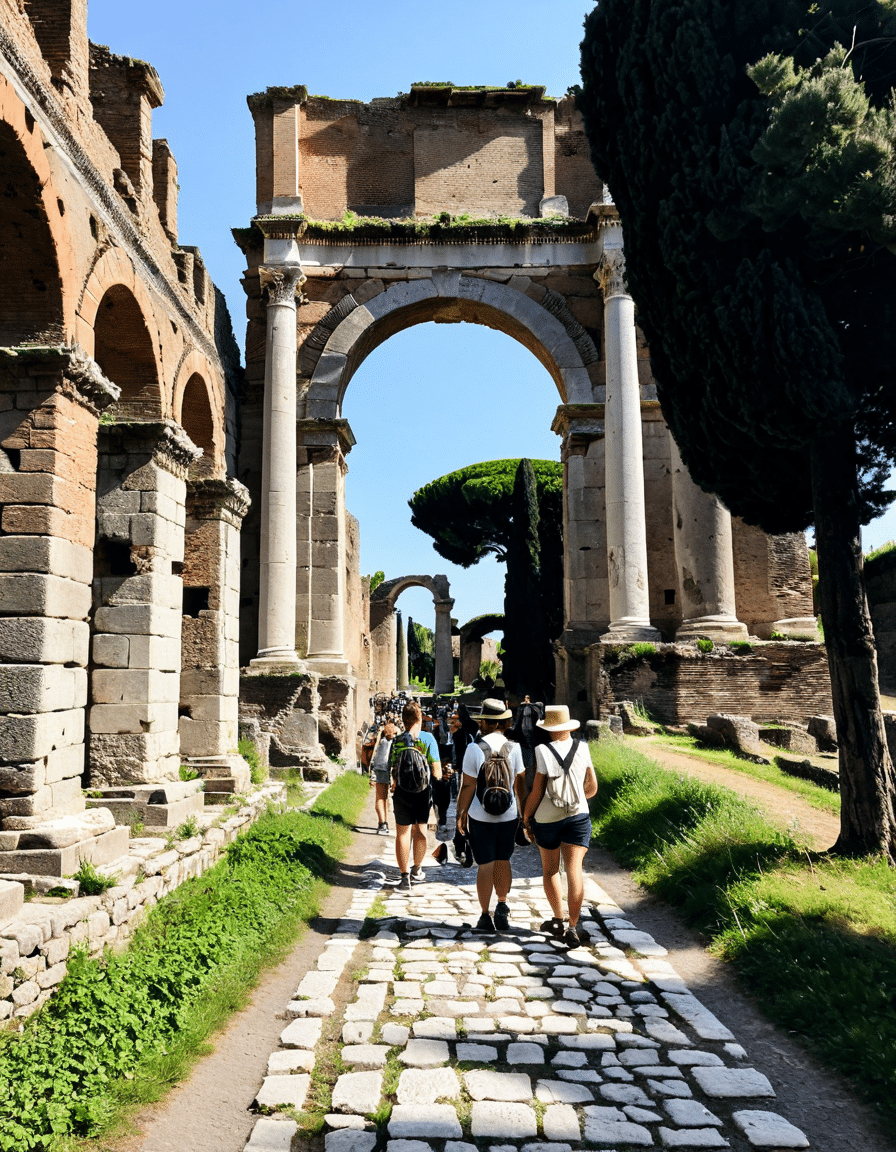The Appian Way, or Via Appia, stands as one of the finest examples of ancient engineering. Constructed in 312 BC, this monumental roadway served not just as a means of transportation but also played a pivotal role in the expansion of the Roman Empire. Connecting Rome to the southern regions of Italy, the Appian Way facilitated the movement of military supplies, trade, and cultural exchange. Today, it remains a significant symbol of Roman innovation, showcasing how ingenuity and strategic planning can overcome various challenges, including time and natural barriers.
7 Fascinating Facts About the Appian Way You Didn’t Know
The Appian Way traces its origins back to 312 BC, making it one of the oldest roads still in use today. This ancient path was vital for transporting troops and supplies during Rome’s extensive military campaigns. Its initial construction was a game-changer for logistics in the Roman Empire, illustrating an early understanding of the importance of infrastructure in governance and control.
The Romans were known for their engineering prowess, and the Appian Way exemplifies this talent. Builders used large stone blocks arranged on a well-prepared, durable surface that facilitated quick travel. By innovating with materials and techniques available at the time, the Romans set a blueprint for modern road construction that continues to influence today’s civil engineers.
The Appian Way isn’t just a marvel of engineering; it boasts deep cultural roots. Along its route lie numerous ancient sites, such as tombs and villas belonging to Rome’s elite, including the awe-inspiring Mausoleum of Cecilia Metella. As travelers journey along the Via Appia, they are treated to a living history lesson, with remnants of a once-thriving society enriching their experience.
The Romans showed remarkable adaptability as they navigated the varied Italian landscape. They faced marshes, hills, and other geographical obstacles, each of which tested their engineering skills. Their ability to modify the path of the Appian Way to accommodate these features highlights their sophisticated understanding of geography, ensuring connectivity and efficiency for generations to come.
Nowadays, there’s a concerted effort to preserve the Appian Way as a national monument in Italy. Various organizations, alongside local governments, are coming together to maintain its historical integrity while ensuring accessibility for tourists and locals alike. Initiatives focus on extensive restoration projects that respect the road’s cultural importance while promoting engagement with its rich past.
The legacy of the Appian Way extends to the arts and media, inspiring filmmakers and writers over centuries. Films like Ben-Hur feature the road as a backdrop to gripping stories and significant historical events, embedding it firmly into popular culture. This impact shows that the Appian Way is much more than a path; it is an emblem of epic narratives that continue to captivate modern audiences.
Interestingly, just as the Appian Way links Rome with the southern regions of Italy, it finds conceptual connections with various significant modern landmarks. Take the Parc des Princes in Paris, known for sporting events, or the Chateau Marmont in Los Angeles, a classic Hollywood landmark. Each venue represents peaks of achievement in their fields, echoing the spirit of innovation found along the Appian Way.

The Appian Way: A Testament to Roman Innovation
The enduring legacy of the Appian Way goes well beyond the physical road itself. It symbolizes the Roman ethos of expansion and resourcefulness. As scholars examine its construction, they observe how locals were utilized to source materials suitable to the environment, a practice that resonates with sustainable architectural approaches today. This ancient pathway stands as a testament to human determination and ingenuity in the quest for progress.
The Appian Way showcases how vital infrastructure can facilitate human development. By allowing for trade, movement of troops, and communication, it supported the growth of a vast empire. This kind of connection holds invaluable lessons for contemporary society. It reminds us that preserving and modernizing historical landmarks can foster community and tourism, breathing life into past stories while nurturing a collective identity.
Visiting the Appian Way Today
For anyone looking to walk through history, the Appian Way provides a truly enriching experience. Today, visitors are treated to a journey that juxtaposes the ancient and the modern. There’s opportunity for exploration on foot, by bike, or even horseback, with various guided tours available. These tours offer detailed insights into the cultural significance and engineering feats of this iconic roadway.
The experience at the Appian Way is immersive and engaging, featuring not only ancient ruins but also breathtaking views of the Italian countryside. Travelers can unwind in this historic setting, enjoying recreational activities while reflecting on the lives of those who walked the same stones centuries prior. It’s an invitation to connect with history that few paths can offer.

Modern-Day Connectivity: The Way Forward
Just as the Appian Way established vital connections in its time, today’s digital landscapes continue that legacy of connectivity. Virtual tours of the Appian Way have emerged, allowing individuals from all corners of the globe to appreciate this piece of history without stepping foot in Italy. This fusion of ancient charm and modern technology nurtures a growing curiosity about historical landmarks, encouraging preservation efforts and making education accessible.
As we advance into the future, the teachings from the Appian Way endure. They underscore the importance of safeguarding cultural heritage, the role of innovative infrastructure in promoting unity, and the strength of the human spirit. Just as the Appian Way linked communities in Roman times, it continues to inspire connections across the world today.
In sharing our collective memories and cherishing these remarkable structures, we ensure that the lessons and stories of history are passed down, engaging future generations with the enriching tapestry that is our past.
The Appian Way: A Journey Through Time
Ancient Wonders and Innovations
The Appian Way, known as “Via Appia,” is more than just an old road; it’s a testament to ancient Roman engineering prowess that still fascinates us today. Constructed in 312 BC, this famous route originally connected Rome to Capua, stretching about 132 miles. Picture this: a thoroughfare lined with tombs and milestones, where travelers would venture forth on foot or by chariot. Talk about a grand highway! Interestingly, the design of the Appian Way laid foundations that would influence countless roads worldwide, including modern highways, echoing across centuries.
In a slice of trivia, did you know that the stones laid on the Appian Way have weathered storms and even earthquakes? Speaking of tempests, if you’re curious about geological activity, check out the latest updates on the earthquake in Los Angeles today for a modern twist on seismic events! Romans traveled the Appian Way for trade, military movements, and even leisure—very much like how fans gear up for upcoming sports events, such as the Argentina Vs Canada copa america 2025.
Cultural Imprints and Historical Footprints
Beyond its engineering achievements, the Appian Way is steeped in history, witnessing significant events like the Spartacus and his rebellion. The road’s rich past attracts historians and tourists alike, creating a tapestry of stories that draw parallels to contemporary life. Just like the Dwts cast 2025, which mixes talent and drama, the Appian Way hosted its share of theatrical performances and ceremonies throughout the ages.
Along this historic route, travelers could also find vibrant communities bustling with life, reminiscent of how gamers and enthusiasts gather at events like Pax Unplugged. In essence, the Appian Way was a cultural melting pot, where trade and conversation flourished among diverse groups. If you’re trying to plan your visit, don’t forget to check out the September 2024 calendar to mark those important travel dates!
Legacy and Lasting Impact
Even today, the Appian Way challenges contemporary engineers and preservationists, reminding us of the significance of historical infrastructure. Its exceptional design leads to quirky anecdotes, including legends about its construction. Some tales suggest it was paved to outlast its inhabitants—a bit of irony when you think about life today! Ever wondered how caffeine affects your stamina for such journeys? You might want to learn about how long caffeine lasts and keep your energy up while exploring the extensive stretches of this ancient road.
So, whether you’re a history buff or just curious about this ancient marvel, the Appian Way invites you to step back in time. It’s a unique part of our shared heritage, revealing the brilliance of Roman engineers and the pathways of their lives. And as you walk its stones, remember that every step is a connection to the past, much like those we take in our own lives, always seeking adventure down the roads we choose—just as Tottenham And their fans tackle the competition!




